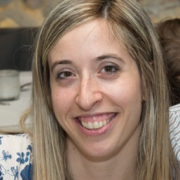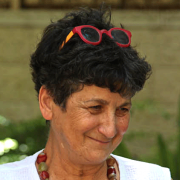Introducing young people to Open Science
In 2015 EU Commissioner Carlos Moedas defined three strategic priorities for European Research and Innovation: Open Innovation, Open Science, and Openness to the World. Open Science is the movement to make scientific research, data and dissemination accessible to all levels of an inquiring society, whether amateur or professional. One important aspect of Open Science is publishing Open Research and campaigning for Open Access.
How can a science centre / museum or a school introduce young people to the world of Open Science? How can we familiarise young people with the world of scientific journals, peer review processes, open data management and cutting-edge research? In this session, speakers will introduce three case studies of organisations dealing with exactly these issues with their strategies and projects.
Session speakers
Aliki Giannakopoulou will talk about The Open Schools Journal for Open Science, the first European peer review scientific journal which accepts original papers written by school age students from Primary to Secondary schools across Europe under the mentoring of their Teachers on all aspects of Science, Engineering and Technology. Students and Teachers via school projects produce scientific data that are invited to be published in this journal. The Journal publishes articles on a regular basis. Publication is free of charge and the Journal carries articles in English at the moment. Aliki is the Journal Manager and NEMO, Citta della scienza , cite de l’espace, ciencia viva and bloomfield are leading the process of motivating students in their countries to submit articles.
Maya Halevy will talk about the role of Bloomfield in the FRONTIERS Journal for young minds . https://kids.frontiersin.org/
This journal invites students to be reviewers of current scientific articles. Distinguished scientists are invited to write about their cutting-edge discoveries in a language that is accessible for young readers, and it is then up to the kids themselves – with the help of a science mentor – to provide feedback and explain to the authors how to best improve the articles before publication. As a result, Frontiers for Young Minds provides a collection of freely available scientific articles by distinguished scientists that are shaped for younger audiences by the input of their own young peers. Even before the publication of our first 50 articles, the quality of Frontiers for Young Minds was recognized as one of the American Library Association’s 2014 Great Websites for Kids.
Manager Science Communication
Jeroen Wiegertjes explains how NEMO Kennislink (translates as Knowledge Link) makes science news accessible for (young) audiences and education institutions. For science to be open, it is not enough to remove financial barriers to scientific publications. It requires a lot of editorial skill and knowledge to select studies and to translate them to general audiences. Sometimes scientists are capable to tell their own stories, and that can be great. But more often science journalists do the job better. The NEMO Kennislink platform has acquired a high Google ranking, connections with research institutions and science journalists. Could this model work also in your country?




